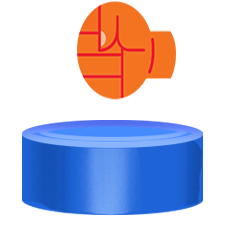Steam'i Yükleyin
giriş
|
dil
简体中文 (Basitleştirilmiş Çince)
繁體中文 (Geleneksel Çince)
日本語 (Japonca)
한국어 (Korece)
ไทย (Tayca)
Български (Bulgarca)
Čeština (Çekçe)
Dansk (Danca)
Deutsch (Almanca)
English (İngilizce)
Español - España (İspanyolca - İspanya)
Español - Latinoamérica (İspanyolca - Latin Amerika)
Ελληνικά (Yunanca)
Français (Fransızca)
Italiano (İtalyanca)
Bahasa Indonesia (Endonezce)
Magyar (Macarca)
Nederlands (Hollandaca)
Norsk (Norveççe)
Polski (Lehçe)
Português (Portekizce - Portekiz)
Português - Brasil (Portekizce - Brezilya)
Română (Rumence)
Русский (Rusça)
Suomi (Fince)
Svenska (İsveççe)
Tiếng Việt (Vietnamca)
Українська (Ukraynaca)
Bir çeviri sorunu bildirin




























The Specular file is:
Red - recolour map
Green - Spec
Blue - Metal
Alpha - Gloss [inverse of rough]
Normal is:
Red and Green - normal red
Blue - emissive
Alpha - normal green
PBR texturing is half art and half science. You need to get a feel for how different values look in-game. Stellaris' metalness for instance is a little different than how Blender might render it.
Keep in mind you can make changes to textures during the game and reload with the console command:
"reload texture"
You can look for any PBR based texturing tool. On the cheap though, if you look for a height to normal map converter you can 'easily' make a greyscale height map from your textures in Photoshop or something and then convert it that way.